4. BioChromes¶

This week was amazing we had the chance to explore different natural materials that gives incredible colors, modify them to get different shades, produce inks and pigments, I was amazed by the results we have got In this documentation I will take you through our experiments

Preparing the fibers¶
l. Measuring and Sorting¶
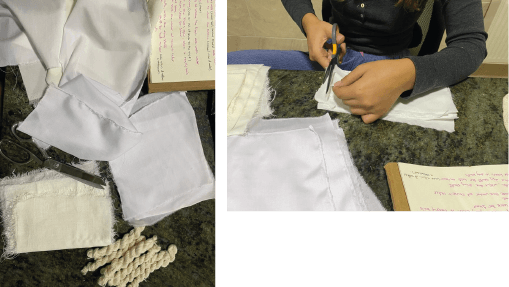

You need to sort your fibers to Animal base fiber and plant base fiber because they will be treated differently
I used silk for the Animal base fibers Cotton and Linen for the Plant base fibers
W.O.F means the wight of the fiber, it is very important to measure your fibers wight before starting and you need to measure them separately
ll. Scouring¶
first lets take a bath¶
Heat the water add 1 tbs of soda to 1 liter of water to get rid of all the impurities, the ratio is 1:1 Add the fibers separately into two pots and leave them for 30-45 minutes
NOTE: NEVER BOIL AMINAL FIBERS
ALWAYS CALCULATE W.O.F WHEN THE FIBERS ARE DRY
You will notice that the plant base fibers water will tern yellow and that because of all the oil and wax in it. that is why we go to the next step and we wash again
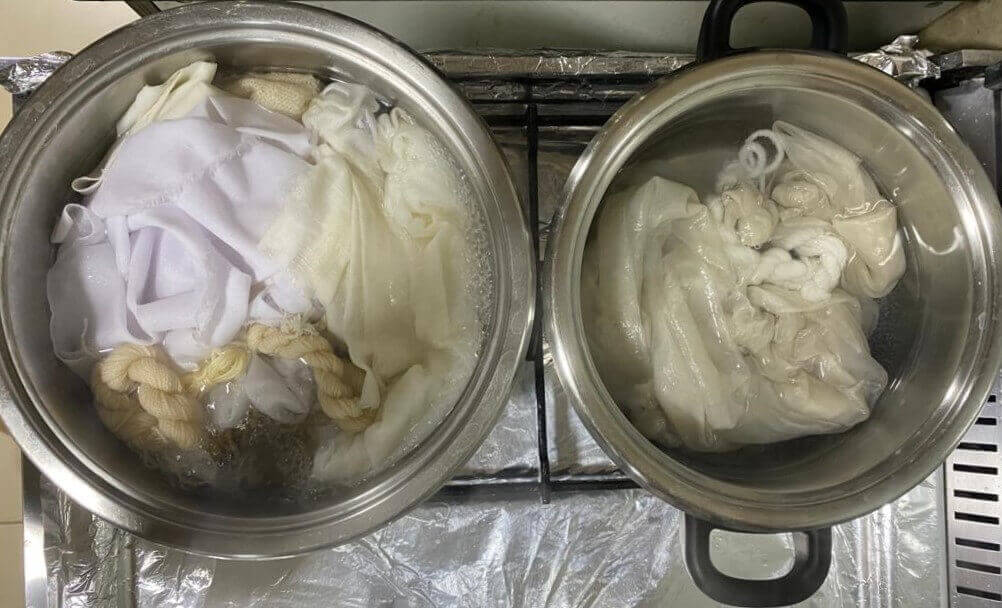
Rinse and wash the fibers with warm water
NOTE: NEVER WASH THE AMINAL BASE FIBER WITH COLD
WATER SO YOU WONT SHOCK THE FIBERS
lll. Mordanting¶
Adding Alum to your fibers Works to lighten the pores of the fabric to absorb colors best
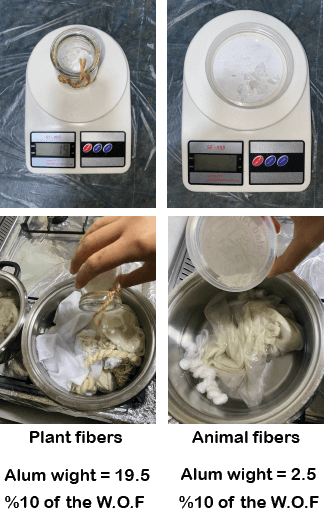
Add water to the fibers again, when the water nearly boils add Alum 10-15% of the W.O.F, stir and leave for 1 hour, After 1 hour rinse and leave
NOTE: YOU CAN STORE THE WATER AND USE LATER
lV. Dye Bath¶
To prepare the dying bath start with measuring the wight of the dying material
Usually you need to make a small research on the dying material you are using some requires a hot dyeing bath and others do not
I used 5 different materials each one of them had a different requirements - SAFFLOWER - BLACK BEANS - HENNA - WALNUT SHELL - INDEGO
Ingredients & Recipes¶
BLACK BEANS¶
THIS ONE REQUIRES A COOL WATER SOAKING
So let's start with Black beans as It was the most successful one, I used Silk and Cotton
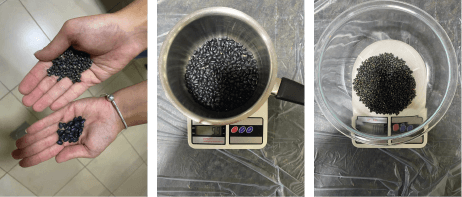
Make sure you have the following
* Black Beans
* Jar
* Spoon
* Cool water
* Colander
* your Mordanted Fabric
- Soak you beans in cool water an leave overnight
- Strain the beans out of the water
- Add you fabrics and leave overnight
I tryed boiling the beans for another dye to see the difference
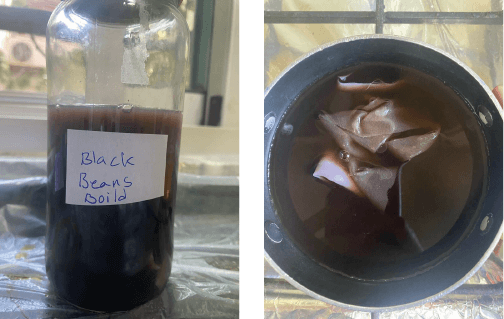
RESULTS¶
I lost the blue color and got light brown instead

MODIFYING
To modify Black Beans you will need bicarbonate sodium and vinegar after you are done with your first dye let fabric dry and spelt you Beans into 3 smaller jars one for the original, one for soda, and one for vinegar
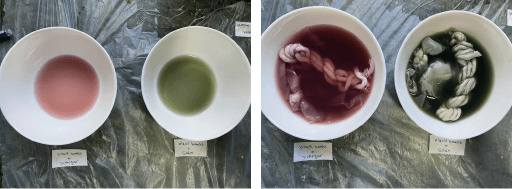
- Soda will turn Black Beans to green
- vinegar will make it purple
RESULTS¶

HENNA¶
Henna is a dye prepared from the plant Lawsonia inermis, also known as the henna tree, the mignonette tree, and the Egyptian privet Henna has been used since antiquity in ancient Egypt and Indian subcontinent to dye skin, hair and fingernails, as well as fabrics including silk, wool, and leather.
Prepare the following
* Henna
* Hibiscus
* A larg pot
* Wooden spoon
* your mordanted fabric
* Hot Water
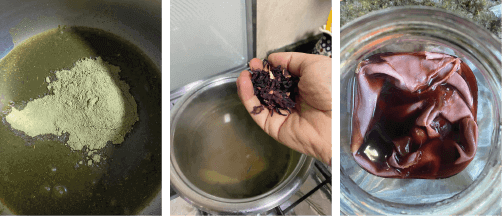
Start with heating water then add the Henna and Hibiscus, boil and soak for half an hour then add your fabric, here I used Silk, Cotton and Linen. leave for 1 hour
MODIFYING
To modify Henna you will need sodium bicarbonate and vinegar after you are done with your first dye let fabric dry and spelt you henna into 3 smaller jars one for the original, one for soda, and one for vinegar
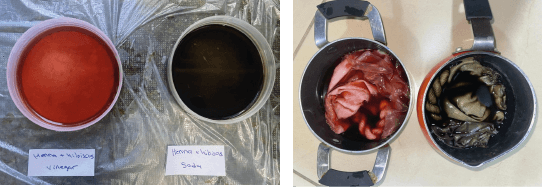
- Soda will give you shades of green depending on the material
- vinegar will make it lighter than the first dye
RESULTS¶

You can modify your fabric after dying by adding drops of the modifier to your fabric piece

INDIGO¶
Indigo dye is an organic compound with a distinctive blue color. Historically, indigo was a natural dye extracted from the leaves of some plants of the Indigofera, The oldest known fabric dyed indigo, dated to 6,000 years ago
To dye using Indigo prepare the following
* Indigo rocks
* Pot
* Wooden spoon
* Hot water
* your Mordanted Fabric
This way of dying using indigo is not the conventional way of dying with it but the results where nice, The indigo blue powder must be dissolved in an alkali bath with the combined oxygen removed. This is done by adding Thiourea Dioxide to the indigo vat during its preparation. Indigo is only soluble in an alkaline solution made by dissolving sodium carbonate (as Soda Ash or Washing Soda) You can find more about the indigo dying Process in this link Dying with Indigo
What I did was
Break your rocks into small pieces dissolve them in hot water, let them boil once, then soak your fabric for 30 minutes, I used Silk, Cotton and linen

NOTE: BECAUSE I DID NOT USE ALKALINE SULUTION TO DISSOLVE INDIGO IT KEPT SINKING TO THE BOTTOM SO YOU HAVE TO KEEP STIRRING FROM TIME TO TIME IF YOU
DONT AND YOU WILL END UP HAVING SHADES IN YOU FABRIC
RESULTS¶
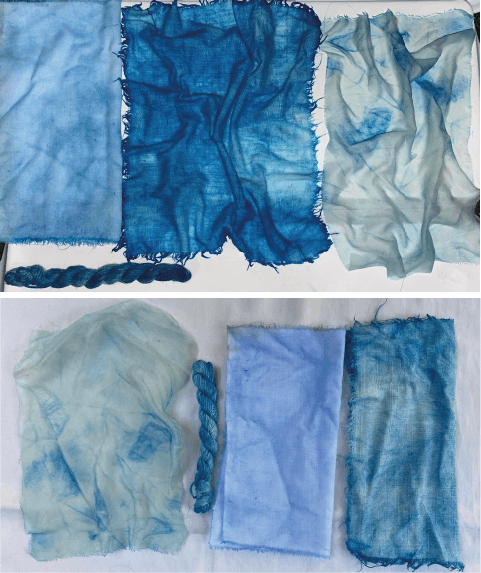
I tried to modify Indigo with soda and vinegar but no major change happened Although you can use Indio as a modifier to others
SAFFLOWER¶
Safflower is a multiuse plant. The flower and oil from the seeds are used as medicine. Safflower seed oil is used for high cholesterol, heart disease, stroke, diabetes, to prevent scarring, and for many other condition. and it is used for dyeing it can give yellow, orang and red colors
THIS ONE REQUIRES COOL WATER AS WELL
Prepare the following
* Safflower Petals
* Jar
* Spoon
* Cool water
* A piece of muslin
* your Mordanted Fabric
Put 100-200% of the W.O.F Safflower petals in a muslin and tie it making a small sack, soak it in cool water and leave check the color of the water every now and then and squeeze the sack to extract the yellow dye when the water is strongly colored and is not taking more color take the sack out put the yellow dye in a jar and soak your fabrics, I used Silk, Linen, Cotton and Crimp.
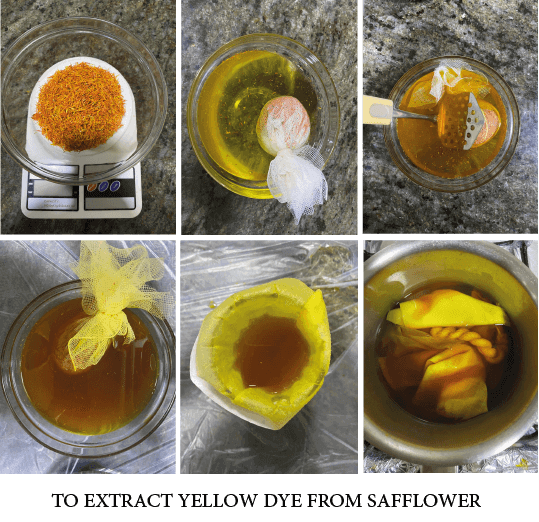
Take the sack of petals and add clear cool water to it again to make the red dye
MODIFYING
I used soda to modify Safflower and the result was light Orange, the fibers I used were silk, cotton and crimp
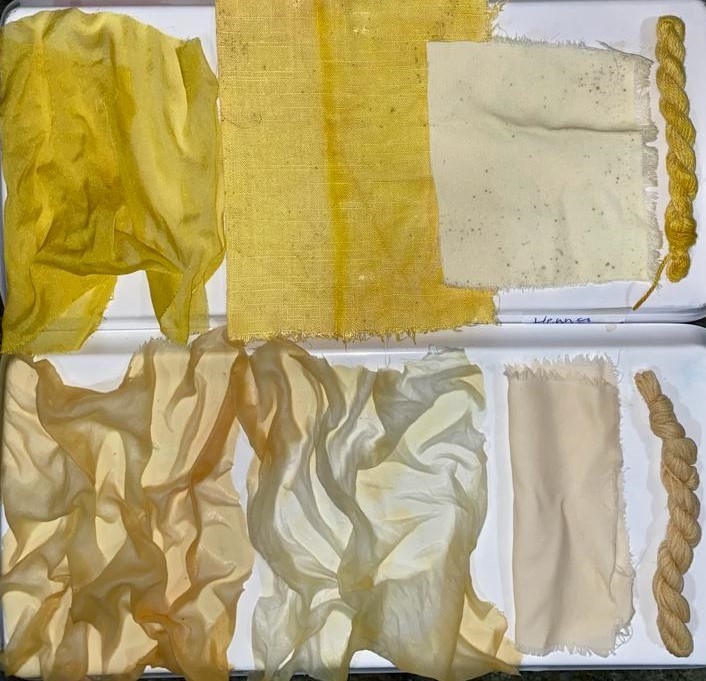
WALNUT SHELL¶
In this one I only had few shells so the color was not so bright but I had a lovely beige color on silk and linen

- First break the shells into small pieces
- add hot water, boil and leave form at least one hour the more you leave them the brighter the color
- soak your fabric and leave overnight
OUR WORK AS A GROUP¶
Preparing our fabric¶
We used (Silk, Wool, Synthetic Wool) for Animal base fibers
(Cotton, Linen, Crimp) for Plant base fibers
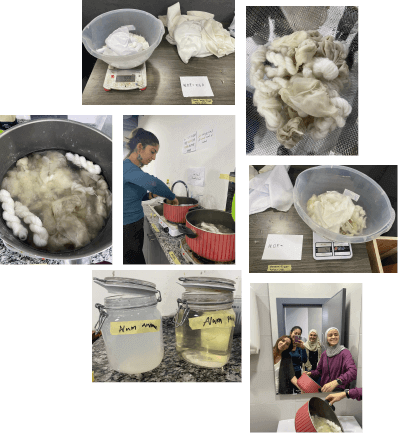
Preparing our dye bath ( Onion & Red Cabbage )¶
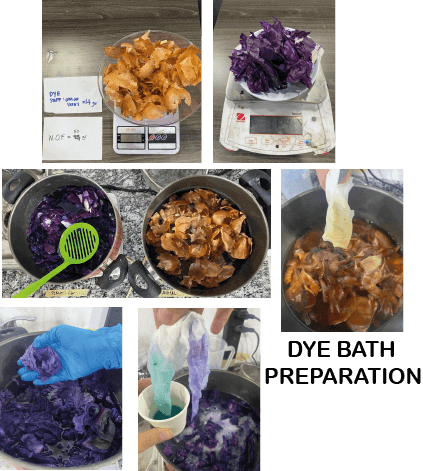
RESULTS¶
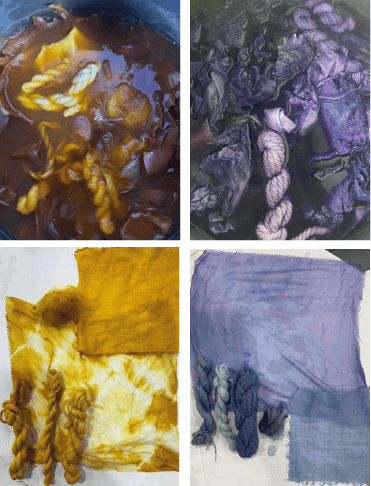
MODIFING
To modify Cabbage you will need sodium bicarbonate and vinegar after you are done with your first dye let fabric dry and spelt you DYE into 3 smaller jars one for the original, one for soda, and one for vinegar
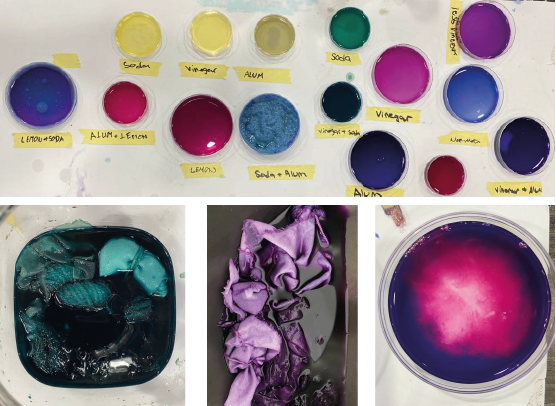
- Soda will turn Cabbage to green
- vinegar will make it Purple and light blue depending on the material
RESULTS¶
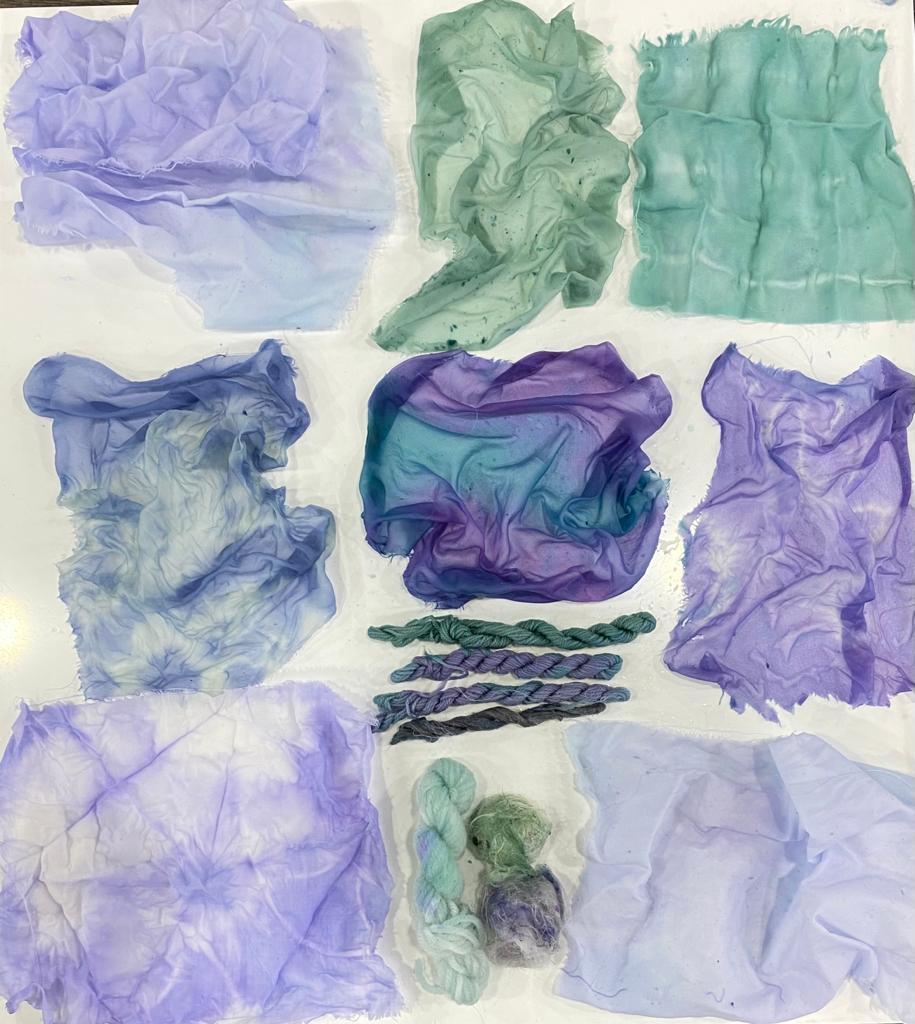
Our Trip¶
We skipped reality for a moment and went on a field trip to collect some Acorns
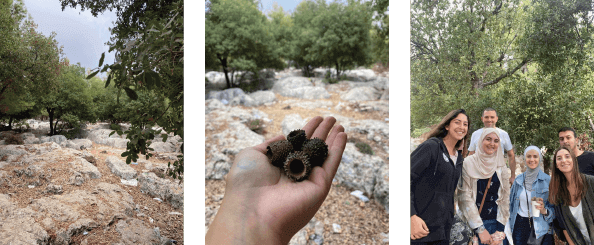 You can see the Acorn results in the documentation of
Shahd Farran
You can see the Acorn results in the documentation of
Shahd Farran
Recycling the dye into pigments¶
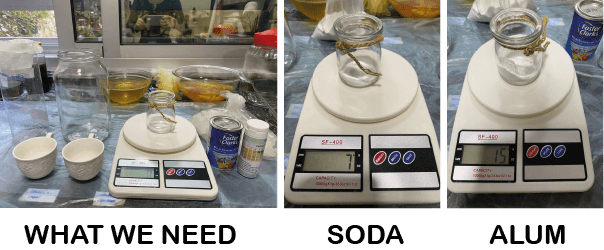
I recycled the safflower dye into pigment
You will need the following
* Your left over safflower dye
* 15 grams of Alum
* 7.5 grams of Soda
* Coffee Filters
* Two tall narrow jars
Measure your Alum and Soda the ratio is 2:1, dissolve Alum and Soda separately with hot boiling water, add Alum to your dye first steer until it completely dissolve, now add you soda slowly steer a bit then leave for about an hour until you have 3 layers.

Now start filtering slowly when your solution is all filtered leave until you have your pigment on the coffee filter, use a spoon to take it of the filter, crash it to make a powder and store it

NOTE: YOU CAN MAKE YOU PIGMENT PAINT BY ADDING SOY MILK
INKS¶
You can produce inks by adding ether water or alcohol to you dye material
As a group we tried those INKS
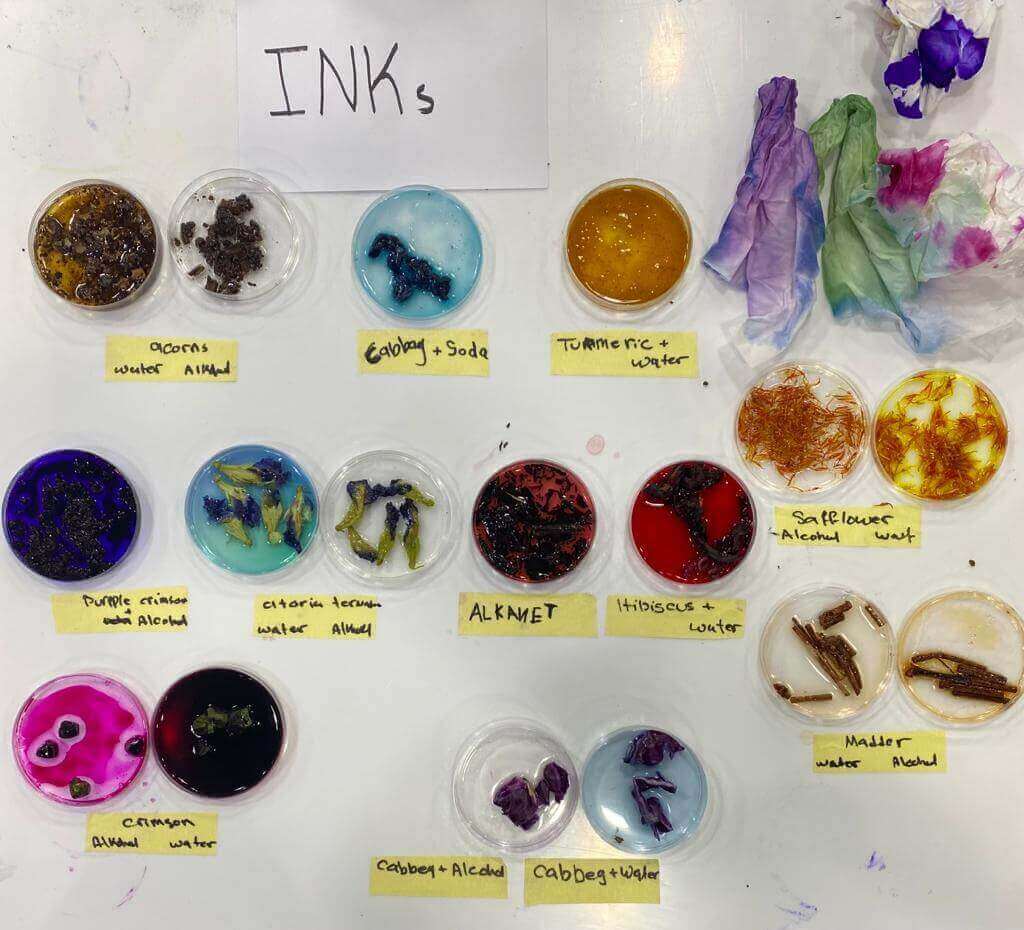
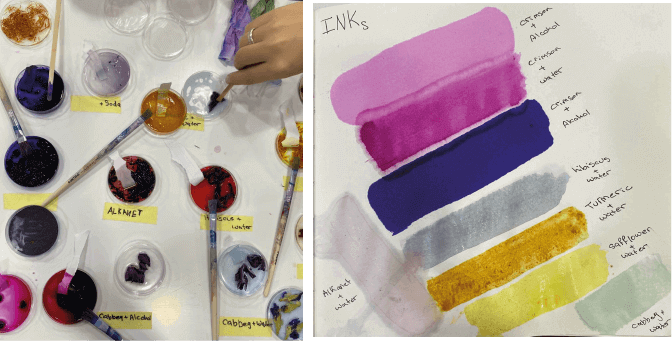
RESULTS¶
I used black crimson rocks and Indio as my INKS

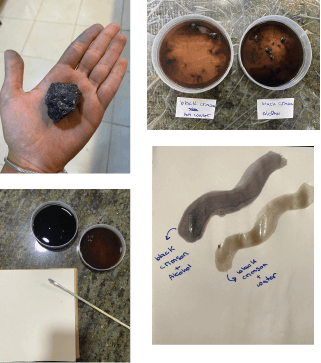
FOR HELP I USED¶
I was really inspired by jenney dean's work you can take a look at it here Jenney Dean's WILD COLORS